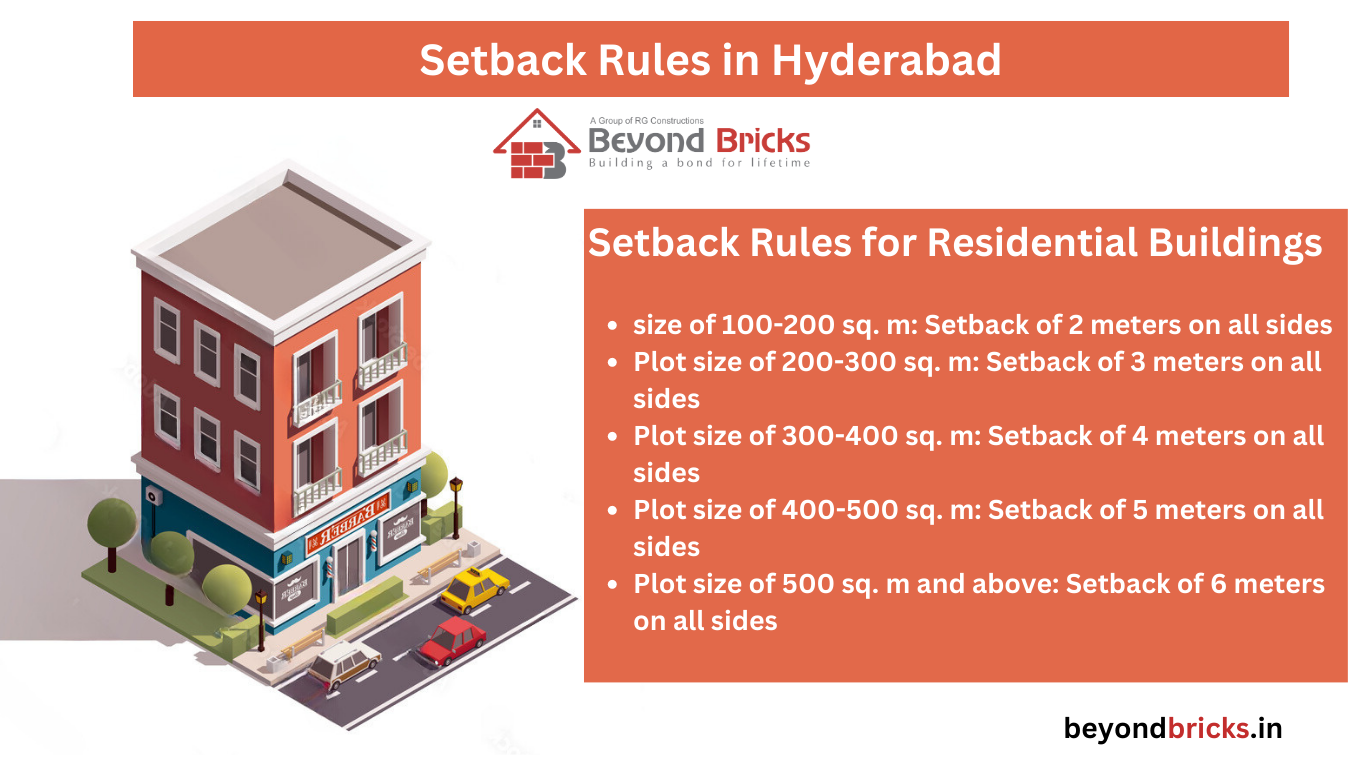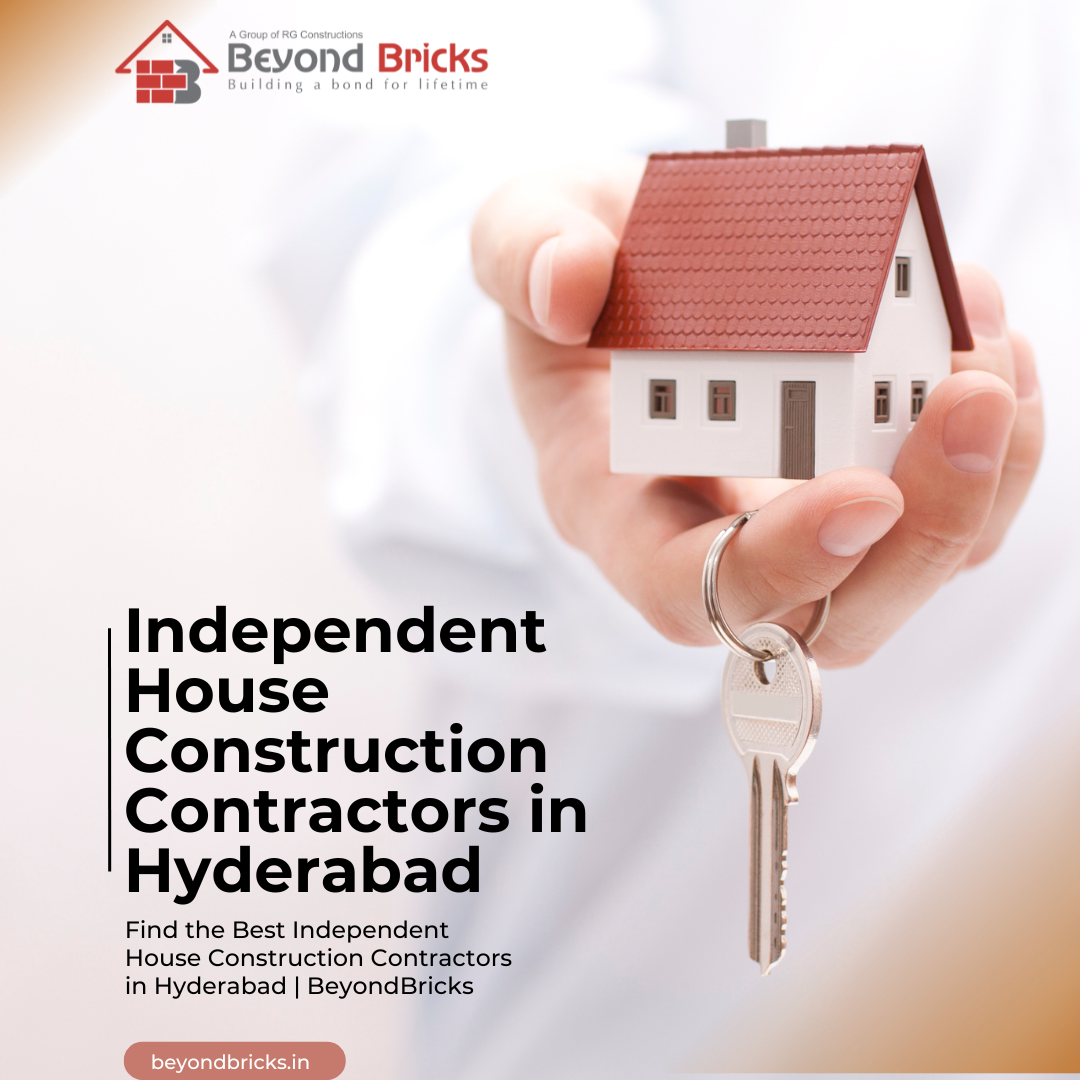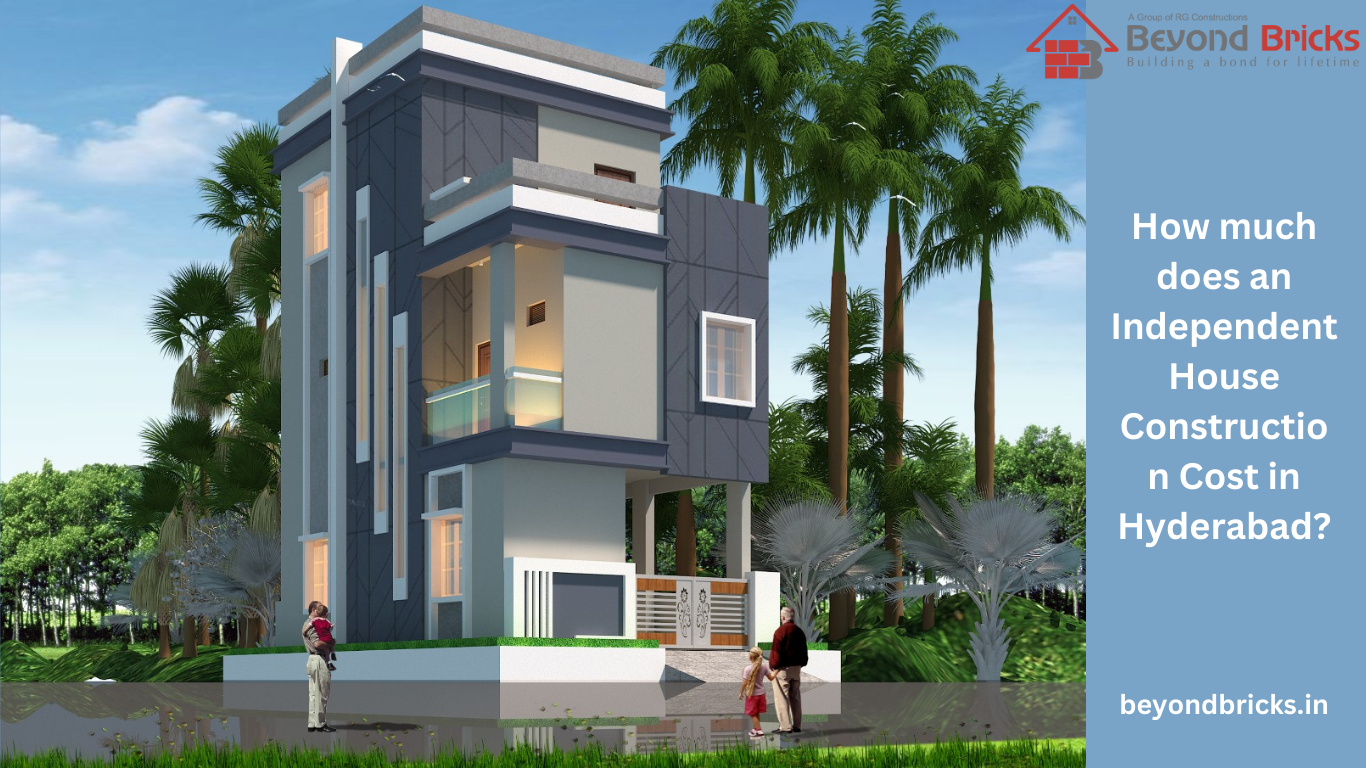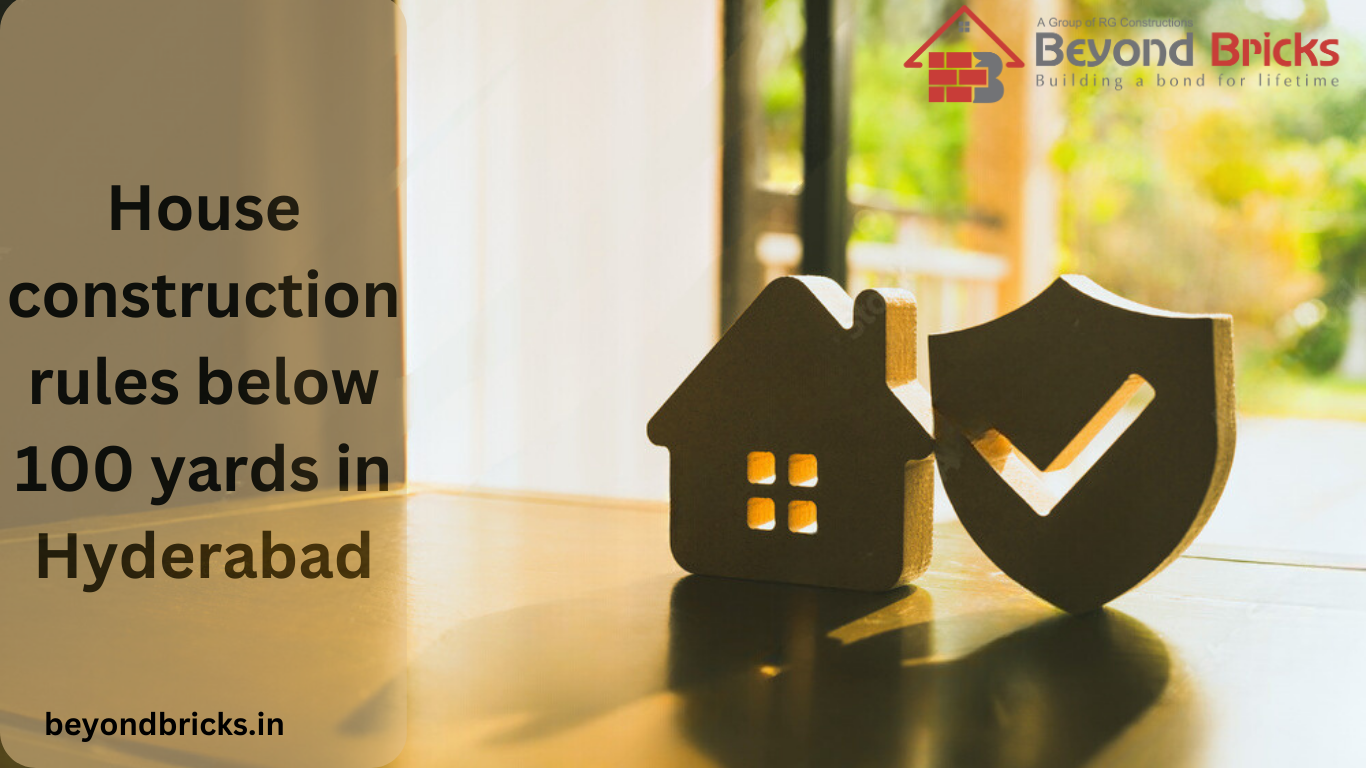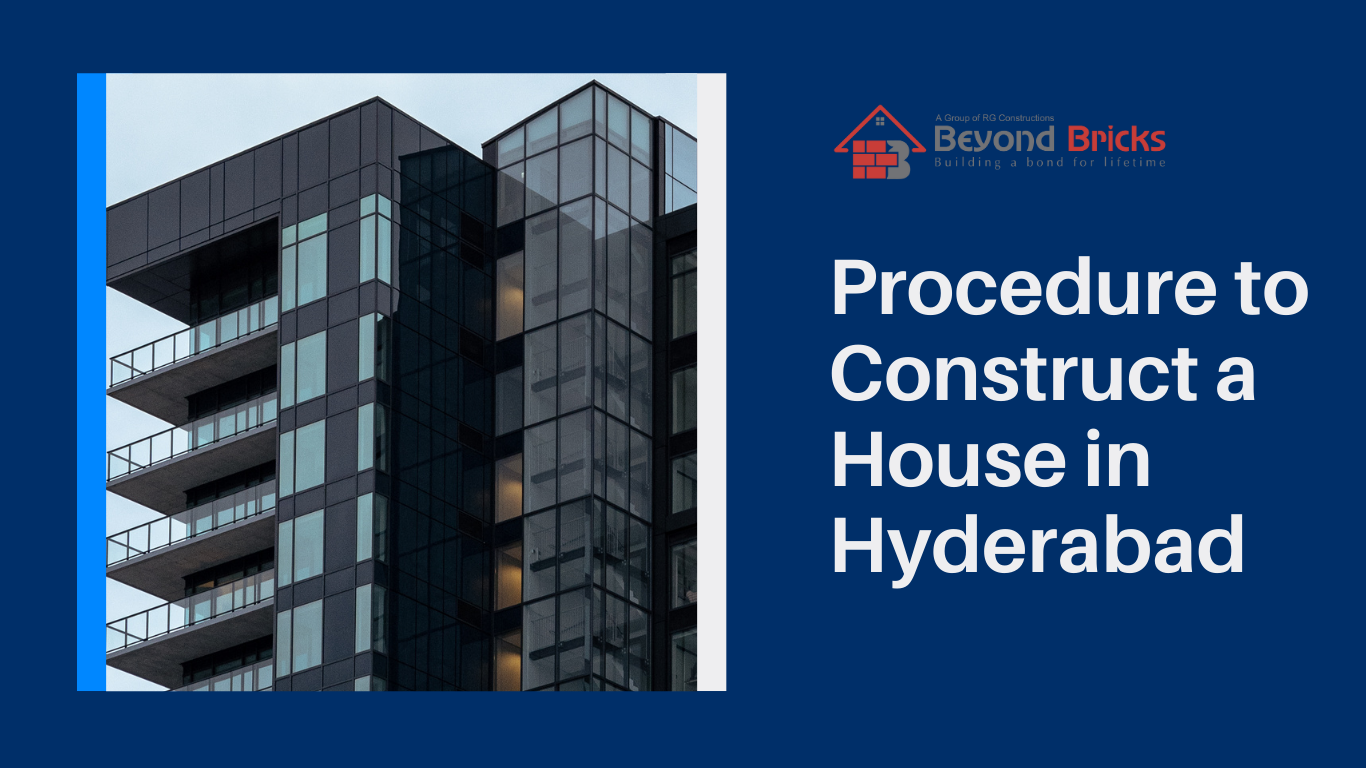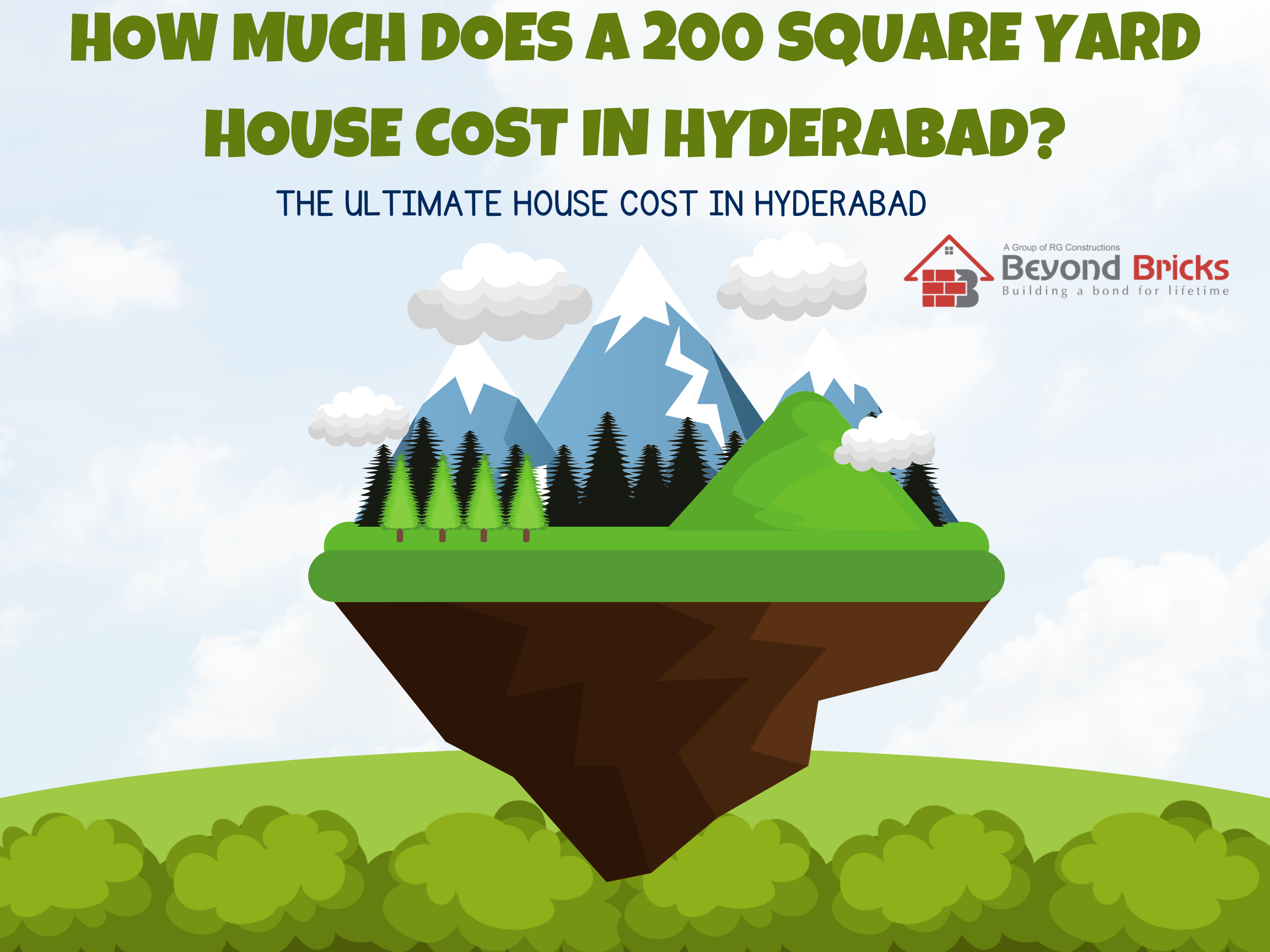Welcome to the complete guide on setback rules in Hyderabad! If you're planning to construct a building or undertake any development project within the city, it's crucial to familiarize yourself with the setback regulations. Understanding and adhering to these guidelines will ensure legal compliance and help you avoid unnecessary penalties and delays. In this article, we will delve into the setback rules in Hyderabad, providing you with the essential information you need to successfully navigate this aspect of construction. Let's dive in!
What are Setback Rules?
Setback rules, also known as building line regulations, are urban planning guidelines that define the minimum distance between a building or structure and the property boundaries. These rules serve various purposes, including ensuring adequate light and ventilation, maintaining aesthetic harmony within neighborhoods, and providing essential amenities such as roads, footpaths, and utilities. As a rapidly growing city, Hyderabad has established setback rules to regulate construction activities and promote sustainable development.
Understanding Setback Rules in Hyderabad
1. Residential Setback Rules
For residential properties in Hyderabad, setback rules primarily depend on the width of the abutting road. Let's explore the setback requirements based on different road widths:
a. Road Width up to 9 meters (30 feet)
If your property is adjacent to a road with a width of up to 9 meters, the setback requirements are as follows:
- Front Setback: A minimum of 1.5 meters or 5% of the plot width, whichever is greater.
- Side Setback: A minimum of 1.0 meter or 5% of the plot width, whichever is greater.
b. Road Width between 9 to 12 meters (30 to 40 feet)
For properties adjoining roads with a width ranging from 9 to 12 meters, the setback rules are as follows:
- Front Setback: A minimum of 2.0 meters or 5% of the plot width, whichever is greater.
- Side Setback: A minimum of 1.5 meters or 5% of the plot width, whichever is greater.
c. Road Width between 12 to 18 meters (40 to 60 feet)
If your property is adjacent to a road with a width between 12 to 18 meters, the setback requirements are as follows:
- Front Setback: A minimum of 2.5 meters or 5% of the plot width, whichever is greater.
- Side Setback: A minimum of 2.0 meters or 5% of the plot width, whichever is greater.
d. Road Width above 18 meters (60 feet)
For properties adjoining roads wider than 18 meters, the setback rules are as follows:
- Front Setback: A minimum of 3.0 meters or 5% of the plot width, whichever is greater.
- Side Setback: A minimum of 2.5 meters or 5% of the plot width, whichever is greater.
2. Commercial Setback Rules
Commercial properties in Hyderabad are subject to slightly different setback rules compared to residential properties. The setback requirements for commercial buildings are as follows:
- Front Setback: A minimum of 3.0 meters or 5% of the plot width, whichever is greater.
- Side Setback: A minimum of 2.0 meters or 5% of the plot width, whichever is greater.
- Rear Setback: A minimum of 2.0 meters or 5% of the plot depth, whichever is greater.
It's important to note that setback rules may vary depending on the specific zone or classification of the property. It is advisable to consult the local development authority or a qualified architect to ensure compliance with the precise setback regulations applicable to your project.
Read More: How Much Does House Construction Permission Cost in Hyderabad?
Benefits of Compliance
Complying with setback rules in Hyderabad is essential for several reasons:
- Legal Compliance: Adhering to setback regulations ensures that your construction activities are by the law, minimizing the risk of legal issues and penalties.
- Safety and Amenities: Setback rules ensure that buildings are appropriately distanced from roads and neighboring properties, allowing for better safety, ventilation, and access to essential amenities.
- Aesthetic Harmony: By maintaining proper setbacks, the cityscape retains a harmonious appearance, enhancing the overall visual appeal of the locality.
- Sustainable Development: Setback rules promote sustainable development by allowing adequate space for landscaping, greenery, and the provision of necessary infrastructure.
The setback rules in Hyderabad are a set of regulations that govern the distance that a building must be set back from the property line. The setback rules are designed to ensure that buildings do not encroach on public space and that there is adequate open space around buildings for safety and ventilation.
The setback rules in Hyderabad vary depending on the type of building and the location of the property. For example, the setback rules for residential buildings are different from the setback rules for commercial buildings. The setback rules also vary depending on the width of the road fronting the property.
In general, the setback rules in Hyderabad require that buildings be set back a minimum of 3 meters from the property line. However, there are some exceptions to this rule. For example, buildings that are located on corner lots may be allowed to have a setback of 2 meters.
If you are planning to build a building in Hyderabad, it is important to check with the Greater Hyderabad Municipal Corporation (GHMC) to determine the specific setback requirements for your property. The GHMC website has a map that shows the setback requirements for different areas of Hyderabad.
Here are some of the benefits of following the setback rules in Hyderabad:
- Increased safety: Setback rules help to ensure that buildings are not located too close to the road, which can help to reduce the risk of accidents.
- Improved ventilation: Setback rules help to ensure that there is adequate open space around buildings, which can help to improve ventilation and reduce the risk of fire.
- Increased property value: Setback rules can help to increase the value of properties by making them more attractive to buyers.
If you are considering building a building in Hyderabad, it is important to follow the setback rules to ensure that your building is safe, healthy, and valuable.
Read More: Documents Required for Building Permission in Hyderabad
Frequently Asked Questions about Hyderabad's Setback Rules
What are the setback rules for HMDA?
The HMDA setback rules are a set of regulations that govern the distance that a building must be set back from the property line. The setback rules are designed to ensure that buildings do not encroach on public space and that there is adequate open space around buildings for safety and ventilation.
The setback rules in Hyderabad vary depending on the type of building and the location of the property. For example, the setback rules for residential buildings are different from the setback rules for commercial buildings. The setback rules also vary depending on the width of the road fronting the property.
In general, the setback rules in Hyderabad require that buildings be set back a minimum of 3 meters from the property line. However, there are some exceptions to this rule. For example, buildings that are located on corner lots may be allowed to have a setback of 2 meters.
If you are planning to build a building in Hyderabad, it is important to check with the HMDA to determine the specific setback requirements for your property. The HMDA website has a map that shows the setback requirements for different areas of Hyderabad.
Here are some of the benefits of following the setback rules in Hyderabad:
- Increased safety: Setback rules help to ensure that buildings are not located too close to the road, which can help to reduce the risk of accidents.
- Improved ventilation: Setback rules help to ensure that there is adequate open space around buildings, which can help to improve ventilation and reduce the risk of fire.
- Increased property value: Setback rules can help to increase the value of properties by making them more attractive to buyers.
If you are considering building a building in Hyderabad, it is important to follow the setback rules to ensure that your building is safe, healthy, and valuable.
Here are the setback rules for HMDA:
Setback Rules for Residential Buildings
- Plot size of 100-200 sq. m: Setback of 2 meters on all sides
- Plot size of 200-300 sq. m: Setback of 3 meters on all sides
- Plot size of 300-400 sq. m: Setback of 4 meters on all sides
- Plot size of 400-500 sq. m: Setback of 5 meters on all sides
- Plot size of 500 sq. m and above Setback of 6 meters on all sides
Setback Rules for Commercial Buildings
- Plot size of 100-200 sq. m: Setback of 3 meters on all sides
- Plot size of 200-300 sq. m: Setback of 4 meters on all sides
- Plot size of 300-400 sq. m: Setback of 5 meters on all sides
- Plot size of 400-500 sq. m: Setback of 6 meters on all sides
- Plot size of 500 sq. m and above Setback of 7 meters on all sides
Setback Rules for Industrial Buildings
- Plot size of 100-200 sq. m: Setback of 4 meters on all sides
- Plot size of 200-300 sq. m: Setback of 5 meters on all sides
- Plot size of 300-400 sq. m: Setback of 6 meters on all sides
- Plot size of 400-500 sq. m: Setback of 7 meters on all sides
- Plot size of 500 sq. m and above Setback of 8 meters on all sides
It is important to note that these are just general setback rules. The specific setback requirements for your property may vary depending on the location of your property and the type of building you are planning to construct. It is always best to check with the HMDA to determine the specific setback requirements for your property before you start construction.
What can be constructed in the setback area?
The setback area is the area around a building that is set back from the property line. The setback area is typically used for landscaping, parking, and other non-building purposes. In some cases, however, it may be possible to construct certain types of buildings in the setback area.
The specific types of buildings that can be constructed in the setback area vary depending on the local zoning regulations. In general, however, the following types of buildings are typically allowed in the setback area:
- Outbuildings: Outbuildings are small, detached structures that are used for storage or other purposes. Examples of outbuildings include sheds, garages, and gazebos.
- Landscaping: The setback area can be used for landscaping purposes, such as planting trees, shrubs, and flowers.
- Parking: The setback area can be used for parking cars and other vehicles.
- Utilities: The setback area can be used to house utility equipment, such as water meters and electrical transformers.
It is important to note that the setback area is not a free-for-all. The local zoning regulations will typically specify what types of buildings are allowed in the setback area and what size and height restrictions apply. If you are considering constructing a building in the setback area, it is important to check with the local zoning authority to determine what is allowed.
In addition to the local zoning regulations, there may also be other factors that need to be considered when constructing a building in the setback area. For example, the setback area may be located in a floodplain or other sensitive area. In these cases, additional permits may be required from the local government.
If you are considering constructing a building in the setback area, it is important to consult with a qualified architect or engineer to ensure that the project is compliant with all applicable regulations.
What is the setback distance for buildings in Hyderabad?
Setback distance is the minimum distance that a building must be set back from the property line. Setback distances are typically required by local zoning regulations to ensure that buildings do not encroach on public spaces and to provide adequate open space for pedestrians and vehicles.
The setback distance varies depending on the road's width, the building's height, and the type of land use. For example, a building on a road that is 30 meters wide may be required to have a front setback of at least 6 meters. A building that is 18 meters high may be required to have a setback of at least 3 meters on all sides. And a building that is used for residential purposes may be required to have a setback of at least 2 meters on all sides.
There are a few exceptions to the setback rules. For example, buildings that are used for public purposes, such as schools and hospitals, are not subject to setback rules. And buildings that are located in historic districts may be exempt from the setback rules if they are considered to be contributing properties.
The setback rules are enforced by the local government. If a building is constructed in violation of the setback rules, the local government may issue a stop-work order and/or impose a fine.
Here are some of the key points about setback distances:
- Buildings must be set back from the property line by a minimum distance.
- The setback distance varies depending on the road's width, the building's height, and the type of land use.
- There are a few exceptions to the setback rules.
- The local government enforces the setback rules.
If you are planning to build a new building, it is important to check with the local government to determine the setback requirements for your property.
Following is the Table for the setback distances for residential buildings in Hyderabad
The setback distance for buildings in Hyderabad varies depending on the width of the road, the height of the building, and the type of land use. The following table provides a summary of the setback distances for residential buildings in Hyderabad:
| Road width | Front setback | Side setback |
|---|---|---|
| Up to 18 meters | 2 meters | 1 meter |
| 18 meters to 30 meters | 3 meters | 2 meters |
| Above 30 meters | 6 meters | 3 meters |
It is important to note that these are just the minimum setback distances. In some cases, the local government may require a larger setback distance. It is always best to check with the local government to determine the specific setback requirements for your property.
In addition to the setback distance, there are also other regulations that must be considered when building a new building in Hyderabad. For example, the building must comply with the height restrictions and the floor area ratio (FAR) requirements. The height restriction is the maximum height that a building can be built. The FAR is the maximum amount of floor area that can be built on a given plot of land.
It is important to consult with a qualified architect or engineer to ensure that your building complies with all applicable regulations.
Conclusion
Navigating the setback rules in Hyderabad is crucial for anyone involved in construction or development projects within the city. By understanding and complying with these regulations, you can ensure legal adherence, promote sustainable development, and create spaces that are safe, aesthetically pleasing, and conducive to a high quality of life. Remember to consult the local authorities or professionals in the field for precise and up-to-date information regarding setback rules applicable to your specific project. Happy building!
